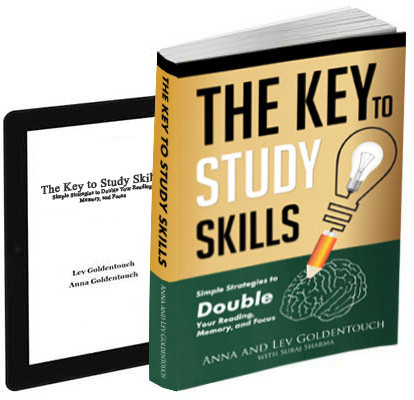Learning how to learn is arguably the most powerful skill of the 21st century. It’s not just about studying faster—it’s about transforming the way you live. Welcome to the world of superlearning: a method of rapid, focused, and intentional learning that doesn’t stop at textbooks.
Superlearners don’t just speed through information—they apply learning to everyday life. From productivity and problem-solving to creativity and communication, the skills developed in superlearning programs can elevate nearly every aspect of your daily routine.
In this updated and expanded guide, we’ll explore how superlearning translates into real-world habits—from speeding up tasks and improving memory to cultivating variety, building confidence, and embracing lifelong learning. Whether you’re just starting or looking to level up, this article will show you how to live smarter, not just study faster.
Speeding Up the Routine
One of the first things superlearners notice is the ability to speed things up—not just reading or studying, but daily life itself. Once you become intentional about information intake, your mind starts to optimize everything: speed-watching videos at 2x, writing emails faster, listening to podcasts during commutes, or even picking up new skills on the fly.
Even casual activities like walking, speaking, or household chores become more efficient. This kind of time awareness and speed control doesn’t just make you more productive—it makes life more manageable.
Want to train this capacity? Our Superlearning Minicourse is the ideal starting point for reprogramming how your brain handles speed, focus, and retention.
Mastering Productive Multitasking
Not everything can be sped up. Some tasks require more time, but that’s where multitasking (done right) comes in. For example, watching a light-hearted comedy show while browsing through a presentation, or helping your kids with homework while reviewing flashcards. It’s not about doing everything perfectly; it’s about layering your focus wisely.
Superlearners often master the art of layered cognition: doing multiple low-load tasks in parallel while switching attention smoothly between them. This allows for higher throughput without mental fatigue.
If you’re curious about how superlearners optimize focus across subjects, explore this breakdown of multidisciplinary reading strategies.
Memory in Motion: Training While Living
Driving is one example where speed and multitasking don’t help much, but it’s still an opportunity to train. Superlearners use everyday moments to reinforce memory: memorizing license plate numbers, noting specific street signs, or observing how the environment changes.
One great technique is to assign meaning or personal associations to visual input—this turns passive perception into active recall. It’s an excellent way to build long-term memory pathways outside of formal learning time.
This is part of the lifestyle mindset that also shows up in our Wellbeing and Sleep course, where daily performance and cognitive load are tied to healthy, integrated routines.
Quality Over Chaos: Reclaiming Precision
Speed is great, but superlearning also allows for doing things better, not just faster. When you train your attention and retention, you create enough mental space to be more precise: writing with clearer structure, double-checking projects, fixing weak areas, or diving deeper into the details of a new skill.
It’s no longer about racing through life—it’s about raising your standard without burning out.
You can even use learning rituals—like watching TED talks or revisiting foundational techniques—to refresh skills with purpose. Sometimes, watching how to tie a tie (again) becomes part of a deeper reflection on patience, growth, or mastery.
The 40×40 Paradigm: Variety and Depth
As learners evolve, quantity becomes less exciting than novelty and variety. One fun approach is the “40×40” idea: try 40 different ways to do something you love before turning 40 (or whatever age milestone fits you). Whether it’s learning 40 meditation techniques, trying 40 recipes, or writing 40 poems, it’s about exploring the depth of simplicity.
The beauty of this isn’t just in achieving something “impressive.” It’s in discovering how deep even the most basic activities can go when you bring creative variation and conscious experimentation.
Not sure where to start with personal learning projects? This personal empowerment course offers tools for applying superlearning across any vertical: career, lifestyle, or personal growth.
Confidence Through Cognitive Control
One of the most underrated benefits of superlearning is confidence. The ability to process information faster, remember better, and make decisions more clearly naturally increases self-assurance.
Instead of reacting to life passively, superlearners start asking better questions, speaking more clearly, and making choices that align with long-term goals. This shift isn’t just academic—it’s emotional.
To understand how confidence builds through small wins and structured growth, read this guide on how to be more confident in everyday life.
Superlearning = Lifelong Learning = Happiness
The ultimate goal of superlearning is not mastery—it’s meaning. It’s about building a lifestyle that keeps your brain alive and your curiosity thriving. Lifelong learning isn’t just practical—it’s deeply fulfilling. It ties into your identity, gives you direction, and keeps life exciting.
As this article on lifelong learning and happiness shows, consistent learning isn’t a chore—it’s a powerful source of joy and purpose.
Whether you’re chasing mastery in your career or exploring personal interests in your downtime, superlearning ensures you’re never mentally stagnant. That’s where real happiness comes from.
Final Thoughts: Evolve or Stand Still
Superlearning isn’t a trend—it’s a mindset. It’s the deliberate act of evolving your mind and applying what you learn across all areas of life. Whether it’s speeding up tasks, mastering new hobbies, building sharper memory, or finding joy in variation, the tools are available.
But the responsibility is yours. Choose curiosity. Choose a focus. Choose growth.
🧠 Start with the Superlearning Mini Course
📘 Read more in our Books on Amazon
💬 Join the KeyToStudy Facebook Community
Your brain is the most powerful tool you have. Train it. Use it. Enjoy it.

Get 4 Free Sample Chapters of the Key To Study Book
Get access to advanced training, and a selection of free apps to train your reading speed and visual memory

